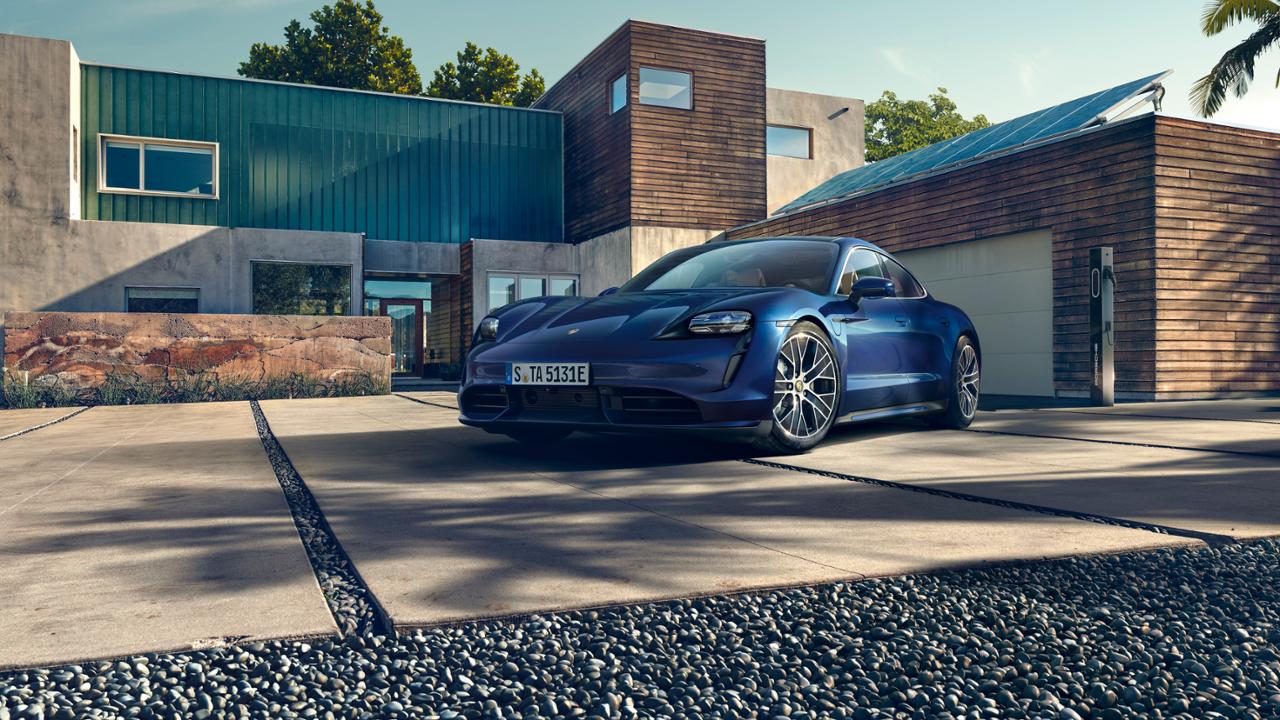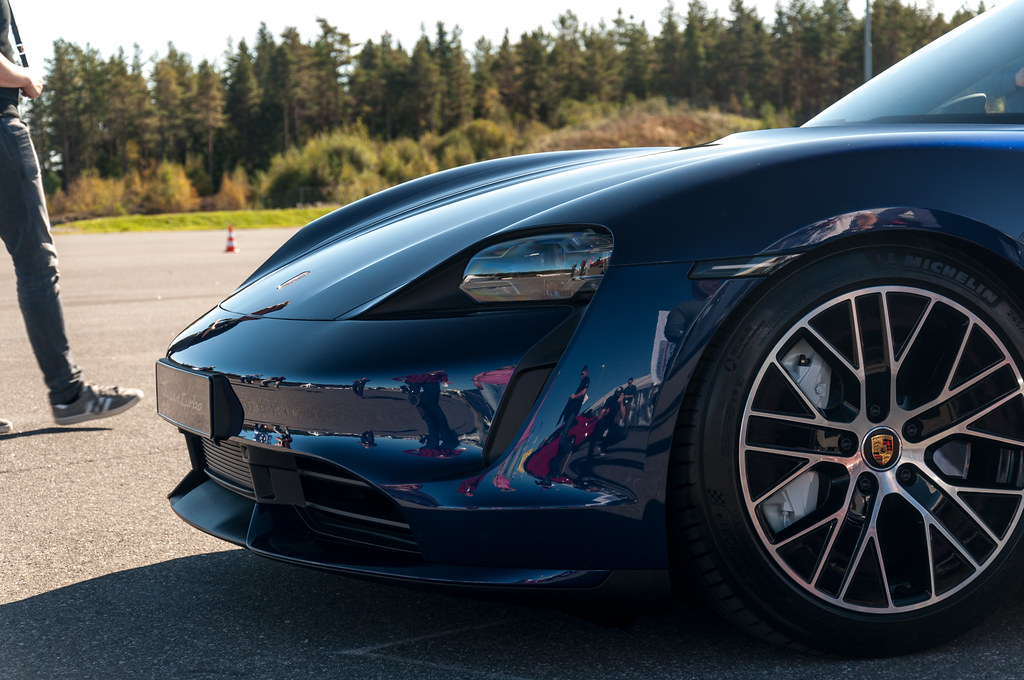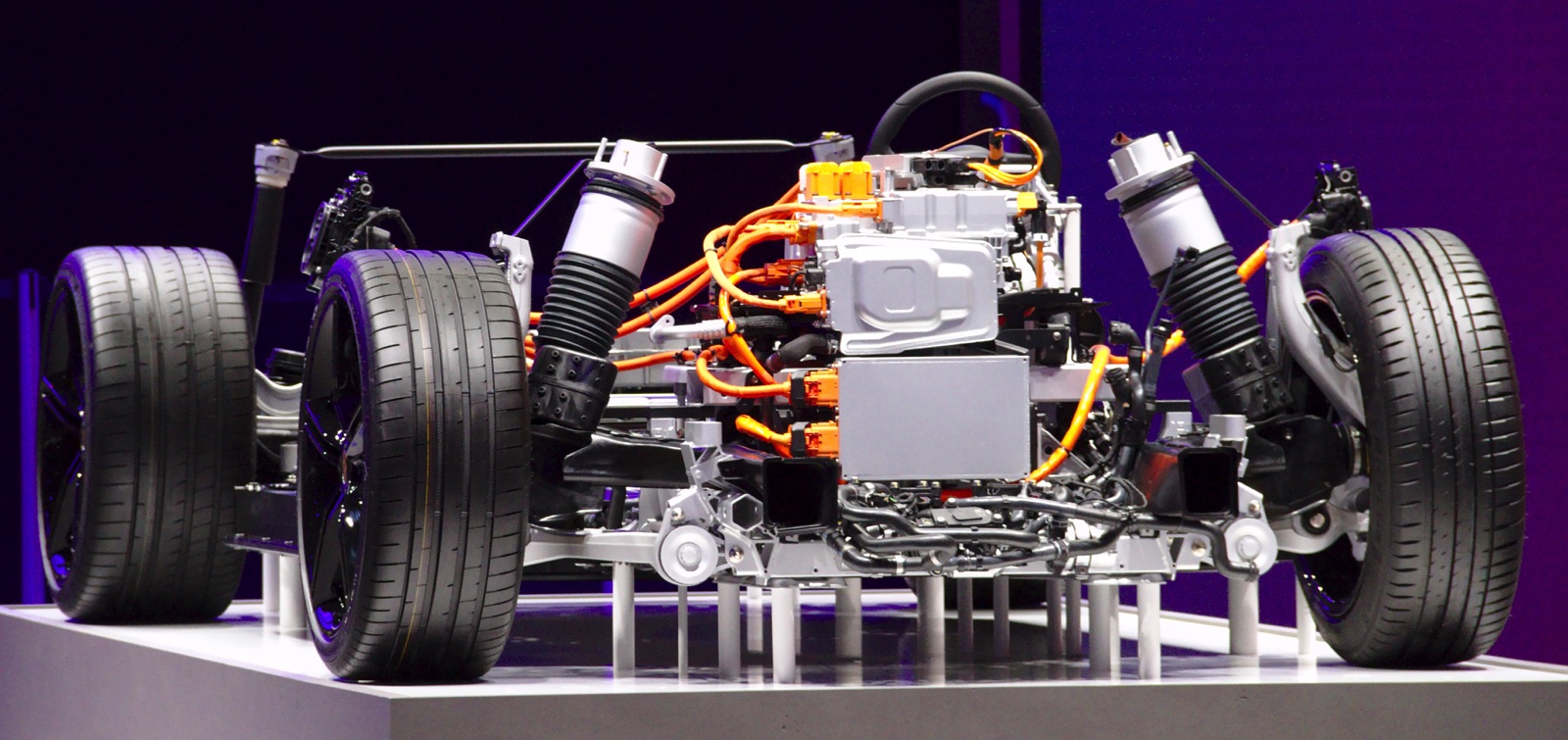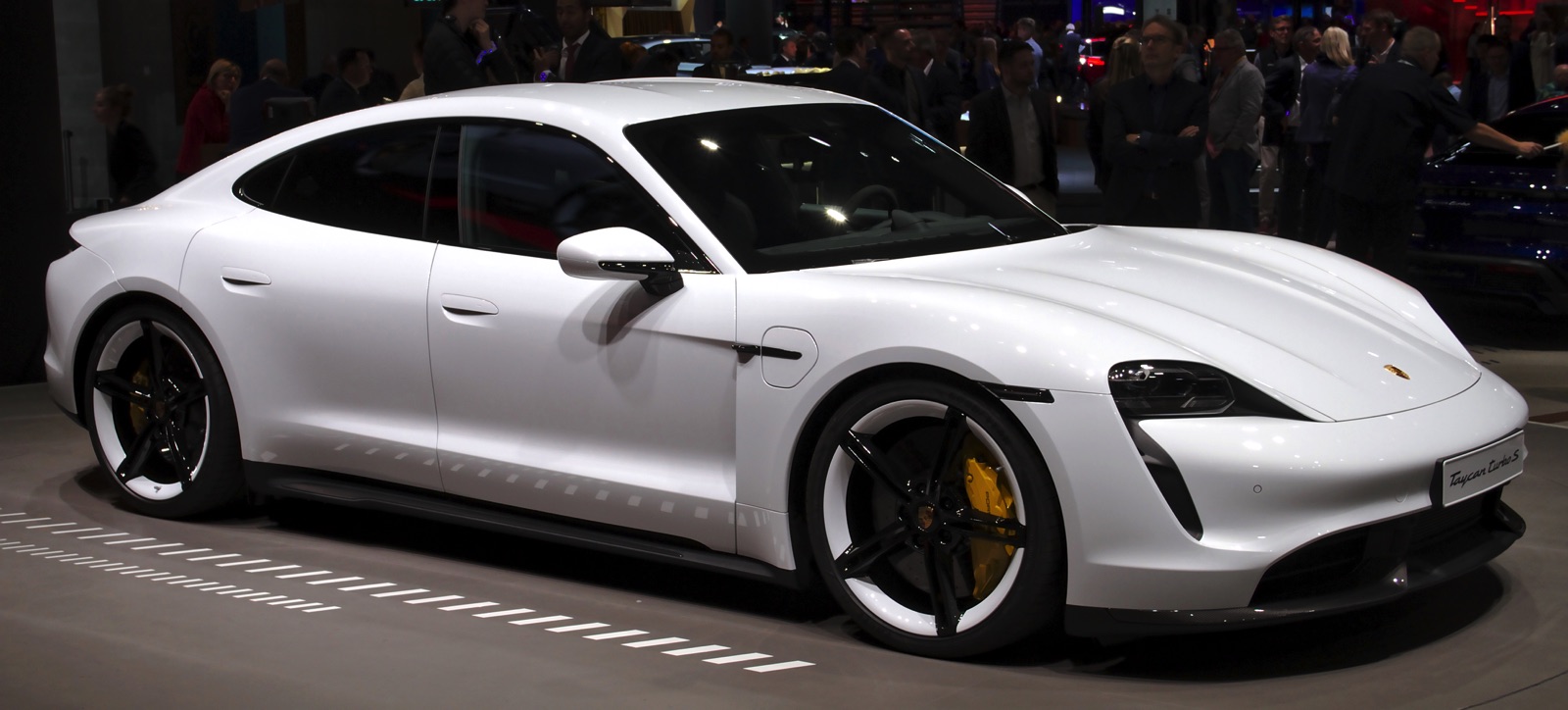Porsche Taycan Turbo S. The new benchmark for electric cars?
Words by Mark Ewing
The Porsche Taycan Turbo S is more than a German response to Tesla’s genre-defining Model S. It is a brilliantly conceived and thoroughly engineered Porsche Super Sedan that stands on its own merits as a car, and not just as an electric car.

The electrica.live lowdown…
- Not just a disruptive concept. A complete vehicle balancing performance and practicality.
- Front and rear motors precisely meter power to each individual wheel—cat-like.
- Hypercar quick: rear 2-speed gearbox and 774 lb. ft. of torque; 0-60 mph in 2.6s.
- High Mega-Pascal steel structure ensures crash safety magnitudes beyond the highest standards of EU/US.
- 4-door 4-passenger with a legitimate everyday range of 190+ miles for commuting.
- Blends existing Porsche systems with unique Taycan engineering.
- Front trunk comparable to Porsche Cayman/718, and reasonable rear cargo capacity.
- No battery fatigue in repeated full-tilt acceleration.
- Low center of gravity, rear-steering, adaptive sway bars for super sedan handling.
- Porsche’s Taycan Turbo S is the first electric car that moves beyond market disruption and cult of personality.
At around $204,000 (£160,000) here in my beautiful bubble of Southern California, the Taycan is for that thin sliver of people at the very top, but the primary takeaway is this: if a battery-electric vehicle (BEV) can be this good, engineered to such a high standard, perhaps we have settled on a way forward beyond the hype we’ve been fed for a decade. If a real car company can produce a car that surpasses every benchmark by such leaps and bounds, isn’t anything possible for the future?
The Taycan is a fully realised consumer product that proves battery-electric cars can be more than an affectation for Silicon Valley techies, or aging Boomers who want to show they’re still hip. It is hypercar-quick in a straight line, hitting 100 km/h in 2.6 seconds and impresses for its balanced performance. It weighs just over 5000 pounds but can change direction as well as any super sedan or even supercar I’ve ever driven. It’s a combination of factors that gives Taycan this grace.
Batteries are along the keel and floor for a very low center of gravity. Two electric motors are placed along the keel, too, one in front and one in the rear. It adopts the rear-wheel steering from Panamera, a system that is used in most of the VW Group’s luxury brands. Electric motors are governed by well scripted electronics that meter out precise amounts of power to each of the wheels, making Taycan very cat-like.
Finally, and of great importance, Taycan has Porsche’s Dynamic Chassis Control (PDCC) sway bar system that deftly limits body roll while allowing the car to retain a fine ride. Taycan is a high-precision performance car.

Plenty of potential choice
The Taycan is offered in a range of models, each one providing incremental gains in performance and the Turbo and Turbo S models have essentially the same liquid-cooled Lithium-Ion battery package, the same front and rear electric motors, the same 2-speed rear gearbox, the same incredibly robust body structure, the same Panamera-derived 3-chamber air suspension system, and the same alphabet soup of Porsche suspension and aero systems that enhance and tailor performance to suit demands of the moment.
Porsche wanted none of the crash-test foibles that have stained the reputations of Tesla and the GM Volt in the past. Porsche went obsessively beyond in crash structure, as one expects with the Germans. Porsche clearly invested considerable time protecting the batteries from side impact crashes, as that was a major fail in the GM/Chevrolet Volt when first introduced, and it harmed the car’s reputation in the U.S.
The Taycan uses an extraordinary amount of hot-formed 1500 Mega-Pascal steel, which is one step short of forged steel. In many of the crash test measures known to me as a Californian—we use a 5-star system, with 3 stars being merely acceptable under the law—Taycan could be six, seven, eight or perhaps even nine stars, if such ratings existed. If I had to guess, the steel used in the roof pillars and structures supporting them are close to 1500 Mega Pascal to ensure this very heavy car will be safe in rollovers.

Evidence of classic German engineering obsession?
The frame for the battery array is a structural element that reinforces between the four suspension mounting points—it’s a massively strong steel square around the passenger compartment. The Taycan’s body is stout. That structure allowed Porsche to give the hefty Taycan a gorgeous panoramic glass roof.
Porsche is arguably the greatest wellspring of engineering in the VW Group, alongside Audi and VW itself. Taycan is so good, so utterly impressive in its performance, its packaging, it’s capability, that one begins to assume the VW Group’s upcoming ID series of battery-electric commuter and family cars will be equally excellent.
I have driven a number of battery-electric vehicles (BEV) in the past two years, and a wave of BEV are coming, from the Germans and Japanese, and also Koreans and Detroit. Choices will expand greatly, and technology advances rapidly these days.
Have no doubt that Taycan Turbo S is a stunning engineering achievement. In my sampling of friends and neighbors, each walked away to ponder the possibility of an electric future.
